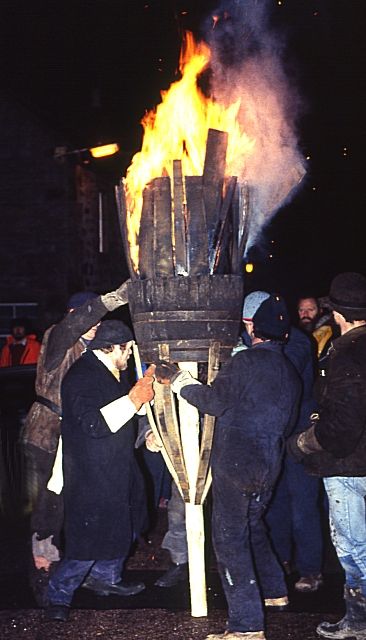About
Each year on January 11th in the small village of Burghead on the coast of Scotland an ancient pagan ceremony, known as The Burning of the Clavie, roars through the streets to celebrate the date of a New Year's Day that was erased by the Gregorian calendar.
The tradition of fire festivals date back to ancient pagan rituals that were practiced in many places across Scotland. While The Burning of the Clavie has its roots in these rituals, it celebrates a much more recent occurrence. A law was passed that outlawed the practice, calling it "superstitious, idolatrous and sinfule, an abominable heathenish practice," but some villages still held the festival anyway.
Then in the 1750s the Catholic church replaced the existing Julian Calendar with the revised Gregorian Calendar, moving the first day of the New Year back by 11 days. This was construed by many as another measure to get rid of any still existing pagan practices. Having none of that, the locals of Burghead decided that The Burning of the Clavie would take place each January 11th to honor what they consider the real New Year's Day. While similar festivals across Scotland were discontinued, Burghead's continues to this day.
On the night of the festival a wooden barrel is filled with tar and staves (the titular "clavie") and then set ablaze. The flaming barrel is mounted on a pole and then marched through the streets of the town by the Burghead-natives-only "Clavie Crew." Eventually the procession makes its way to the site of an ancient altar where the clavie is allowed to burn itself into a pile of ash and cinders. Onlookers then rush in to collect the live coals with which to light their first fire of the year. Other remnants of the burning are collected and sent to acquaintances who have moved away from Burghead.
The Burning of the Clavie is still proudly celebrated in Burghead each year and while spectators can attend, only the village citizens can participate.
Related Tags
Community Contributors
Added By
Published
April 6, 2015






















